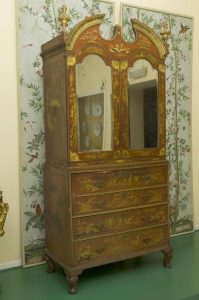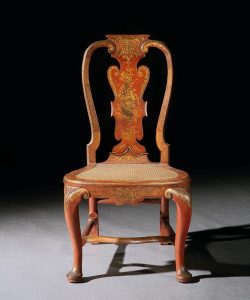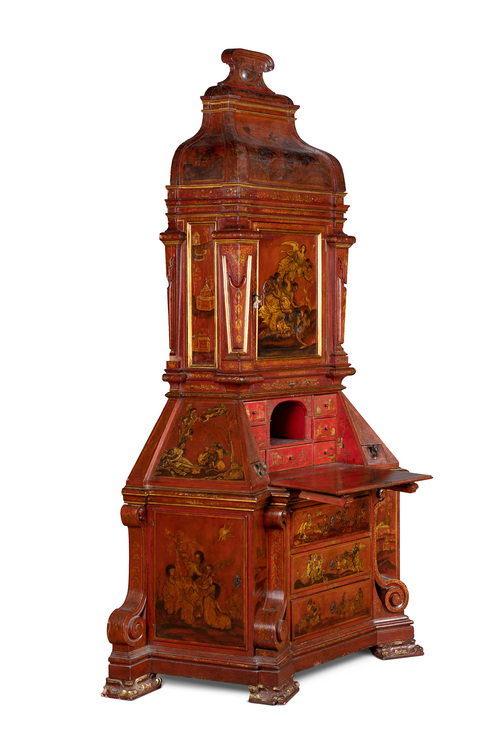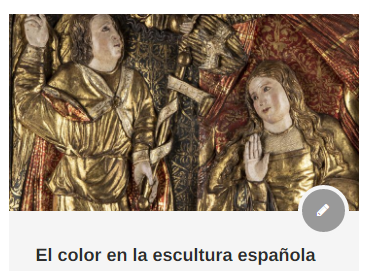The 'japanning' in the Spanish furniture of the 18th century
It is known as maque or japanning, the finishing technique that originated as a European or Latin American imitation of Asian lacquerware, to decorate different surfaces by hand.
Setdart presents this extremely rare example of the Spanishization of this art, applied to a homegrown-library, but also decorated with figurative scenes that faithfully follow the pictorial models of Simon Vouet. This decoration is combined with other ornamental elements that are also polychrome, combining chineries and plant motifs. It is made up of three bodies, all of them visually unified. The lower body, with a mixtilinear base, has three drawers on its front, advanced with respect to the rest of the cabinet, and flanked with two carvings with typically Baroque scrolls. On its sides, said register has two doors that hide three shelves inside, also flanked by moldings with scrolls.
The entire structure stands on legs adorned with braces and baroque plant elements. This body presents in its upper part a bureau on a slope with a forty-five-degree hinged desk door, polychrome in gold with the scene of “Calais and Zetes keeping the Harpies away from King Phineus” on the outside. Inside there is a set of drawers decorated with china. Being a writing desk, it is not surprising the presence of two metal candlesticks that can be seen on the sides of the bureau, with beautiful female effigies, which would serve as support for a candle that would illuminate the user of the furniture.
These objects began to be imported to Europe for the first time at the beginning of the 17th century; however, it was not until the following two centuries that the technique began to evolve and perfect itself, with the important addition of the knowledge and materials of European craftsmen.
English craftsmen began to produce imitations of the technique with lacquers, and in the 18th century they began to develop oil varnishes. This new discovery allowed the inclusion of new base materials on which to apply the technique, such as laminated metals and papier-mâché. In Europe and America, Asian objects were directly related to luxury, especially lacquerware, due to the recognition they gained for the elements that made them up, such as their quality, applications, designs, and techniques.


Initially used in furniture and later in small metal items, maque is considered an art within the crafts of the time. The methods he resorts to are born from experimentation with different materials applied in layers, which together with the reaction of his material (initially wood) and the intervention of human work, result in a meticulous and quite unique work.
Although the most common term to refer to the technique is lacquer, most documents dating from the times of New Spain use the term “maque”. According to Joan Corominas, “It must be the same word as the Portuguese maquie ‘Japanese gold or silver varnish’, documented since 1684 and coming from the Japanese makie, partially confused in Castilian with lacquer.”
The term «maque» was accepted by the Royal Spanish Academy until 1884, defining it as «Very hard and waterproof varnish, composed of resins and juices from Asian plants and various other elements. Japanese sumac”. While, on the other hand, he defined “maquear” as “Adorning furniture, utensils and various other objects with paints or gilding, using maque for this. It is an Asian industry and imitations are made in Europe with white copal varnish».






